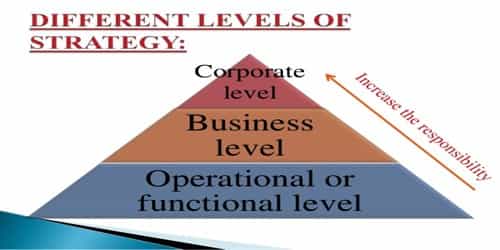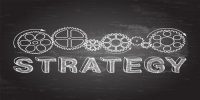A functional strategy is dictated by its parent’s business unit’s strategy – Explanation
A functional business strategy is an area of operational management based on a specific department or discipline within an organization, such as human resources, finance or marketing. To say that a business has a functional level strategy for product development, for instance, means that the company has developed a strategy for selling its goods and services to customers. A functional business strategy is part of an organization’s wider strategic plan.
The functional business strategy enables a company to deal with the nuts and bolts of its long-term organizational plan and short-term goals and objectives. While businesses of all sizes are interested in making a profit, smaller companies sometimes find it easier to define plans and goals in a more meaningful way because there are fewer levels of hierarchy. Functional business strategy helps smaller businesses to evaluate the effects of plans and goals specific to the industry they operate within. Technology companies, for example, might adopt a functional strategy for HR which seeks to hire well-qualified employees with diverse skills in social media, programming, and website design. Such an approach looks at the specific needs of the function – IT, HR, marketing, research, and development – and then set objectives to fill gaps in those functions.
A functional business strategy is often used by small businesses to focus on and manage the business’s constituent parts. By developing individual goals and objectives for specific functions in the company, business owners and managers can assign the right people and resources to the right tasks. An employee with skills in technology, for example, can be given work in that field as opposed to one with which she isn’t familiar. The advantages of functional business strategy, therefore, rely on seeing employees and resources as ends, not as a means to achieving something else. This often means assessing the strengths and weaknesses of the business’s functions and of its resources, including employees.
While the functional business strategy is very useful in helping an organization to value its resources, there are some disadvantages to functional strategy. For small businesses, these downsides are even more pronounced. It is often not possible in a small business to have separate departments for HR, finance, marketing and other business functions. Sometimes all of these tasks are assumed by one person or by a small group of people. This makes functional business strategy quite hard to implement because developing individual goals for each function won’t make sense in an organization where all of the departments are more or less combined. In these cases, strategies must be fluid, adapting to the diverse skill sets and competencies of the resources.
In response to the challenges in functional business strategy, some organizations adopt an operational strategy. An operational business strategy seeks to deal with all of the minutiae that encompass the organization’s day-to-day routine, such as filing invoices, scheduling employee shifts, and dealing with customer complaints. Operational strategy sees resources as a means to an end of effectively managing the business. In the small business setting, an operational strategy is attractive because it allows the organization to see one employee as a resource for many different functions. The operational strategy also helps an organization to identify its weaknesses in functional areas.
While the downsides of functional strategy are pronounced and evident in many small businesses, an operational strategy also has its shortcomings. These include the tendency to view employees as just a pawn in the larger organizational planning Process. Knowledgeable business owners and managers are therefore able to combine elements from both functional and operational business strategy to help plan for the business’s longevity. Seeing employees as the company’s most valuable resource helps to focus on them as ends in themselves while still being able to view other business tools like technology and money as means to achieving the overall goals of the business.
















